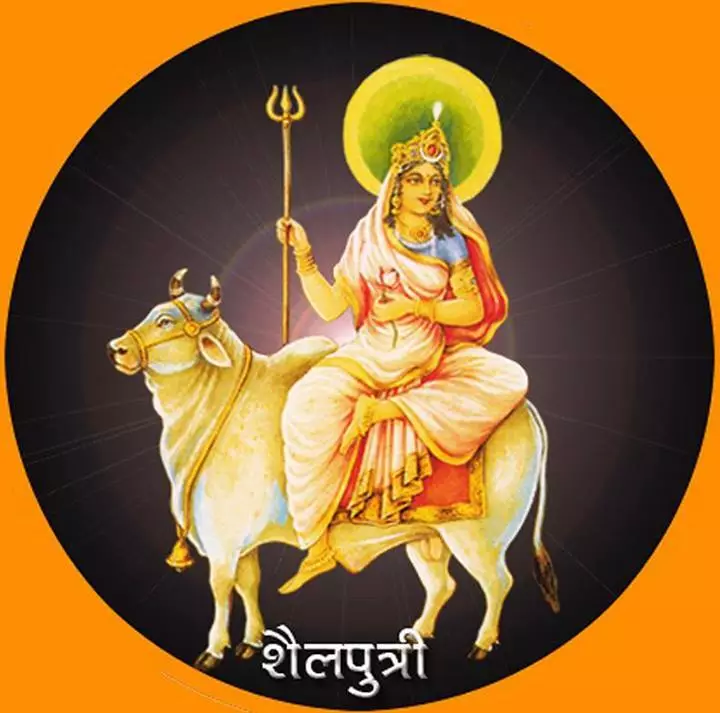

Yellow (Day 1): On Day 1, yellow is associated, and Goddess Shailputri is its meaning, which is associated with happiness and optimism. It is associated with learning and knowledge; thus, it becomes a good start for the festival.
Day 1
October 3
#Yellow
#Goddess #Shailputri
Symbolizes happiness, brightness, and energy.
1st Day of Navratri Color: Yellow
Symbol of Energy: The colour is the symbol of energy, that is, the power and the freshness associated with it; meanwhile, it removes negativities and darkness2.
New Beginnings: This colour is very pronounced in Hindu cultures as a sign for new beginnings; therefore, it's the right connotation when the celebration of Navratri starts23.
Association with Happiness: As a rule, the colour is associated with happiness and positive energies, which bring auspicious energies to devotees' lives.
Spiritual Significance: Yellow is also spiritually linked with Goddess Shailputri and reflects purity and strength.
#Shardiya #Navratri 2024: Many festivals are celebrated in India and every festival has a great historical background. Navratri is one of the most significant and awaited Hindu festivals. A nine-day festival dedicated to Mother Goddess #Durga. Navratri means 'nine special nights', during these nine nights and ten days, nine forms of Shakti / Devi are worshipped. And the word 'night' is a symbol of accomplishment. On the tenth day, Dussehra is celebrated. Navratri comes four times a year. Pausha, Chaitra, Ashadh, Ashwin is celebrated from Pratipada to the ninth.
The story behind Shardiya Navratri
In the Lanka war, Brahmaji asked Shri Ram to worship Chandi Devi for slaughtering Ravana and to make Goddess happy, and according to the law, there was also a provision of 108 rare beans for Chandi Poojan and Havan. On the other hand, Ravan started Chandi lessons to achieve immortality. Indra Dev conveyed this to Shri Ram through Pawan Dev and consulted to Chandi lesson should be given as complete as possible.
Indra Dev conveyed this to Shri Ram through Pawan Dev and counselled that Chandi Lesson should be given as complete as possible. Here in the incense burner, a Nilkamal from the place of worship vanished from Ravan's elusive power, which would disrupt the worship of Shri Ram. Shri Ram's resolution was broken. There was a fear that the goddess-mother would not have become angry.
Arrangements of rare Nilkamal were impossible, only then Shri Ram remembered that he was also called Kamal-Nayan Nawkavang Lochan. So why not dedicate one eye to the worship of the mother. And when Lord Rama got ready to take out an eye after taking an arrow from her, then Goddess appeared, holding her hand and saying, "I am delighted and blessed by Vijayashree."
On the other side, while worshipping Ravana, Hanuman Ji took the form of a Brahmin child and joined Hanumanji in the service. And a verse from the Brahmins performing Puja, Jaya Devi, Bharati Harinani, Harini means that the devotee's suffering and Karani means pain and suffering. With this Durga became angry with Ravana and cursed him. And Ravana was destroyed.
The second story behind Navratri
According to another legend associated with this feast, Goddess Durga was the slaughter of a Buffalo Devils, i.e. Mahishasur. Delighted by Mahishasur's worship, the gods had given him the bridesmaid to be invincible. After receiving that blessing, Mahishasur started misusing him and extended hell to the door of heaven. Mahishasur took away the rights of the sun, moon, Indra, fire, air, yam, Varun and other deities and became the owner of the heavens. Goddesses had to walk on the earth with the fear of Mahishasura. Then, angry with Mahishasur's misery, the gods created the memory of Durga. To slaughter Mahishasura, the gods had dedicated all their weapons and weapons to Durga, which strengthened them. Nine days he had fought with Mahishasur and in the end, Mahishasura was slaughtered and called Mata Durga Mahishasurmardini.
There are no comments yet.